Hacking cultural tourism with “selfie” reenactments of digital heritage: an interview with the project leaders behind VanGoYourself
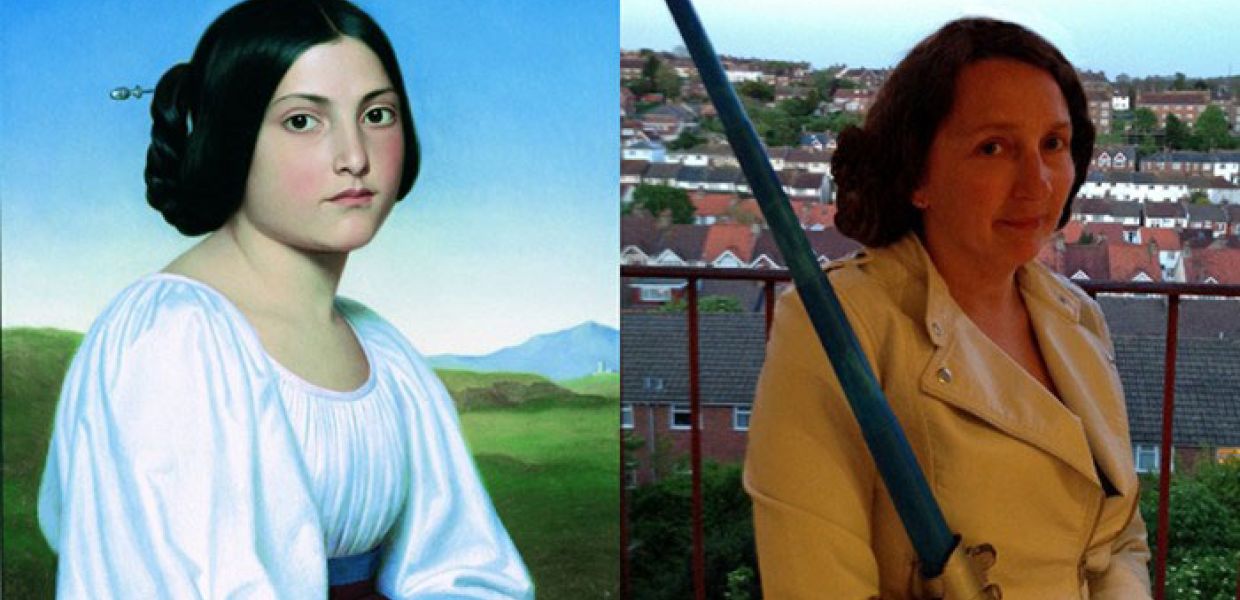
VanGoYourself is the first Europeana Creative pilot launched, which went live in May 2014 as part of Culture24's Museums at Night festival of late night openings in the UK. The website encourages people to recreate a painting with their friends and share the photograph in their social media channels. The paintings come (via Europeana) from a mix of cultural institutions like the Rijksmuseum, the Van Gogh Museum, the Royal Museum of Fine Arts in Brussels or the National Gallery of Denmark and represent the richness of Europe’s cultural heritage.
The site allows you to choose the level of difficulty ('easy’ or ‘challenging for a master), as well as selecting paintings with ‘selfie' potential or ones ‘for lovers’. The service is free and simple to use, and links up to existing widely used social media channels such as Facebook, Twitter, Pinterest and Tumblr.
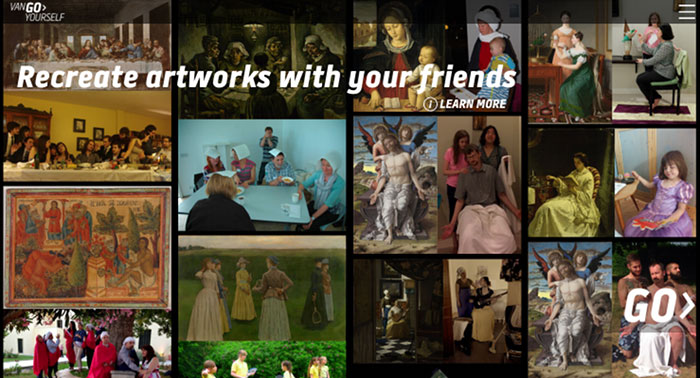
Homepage of VanGoYourself
After a great launch with substantial coverage on the BBC's new Arts website and five live public participation events in Museums, we pause to interview the two Europeana Creative partners behind VanGoYourself: Jane Finnis from Culture24 and Frank Thinnes from Plurio.net…
Cultural selfie? Artistic avatar? How would you define and describe the potential of VanGoYourself? Where does the idea come from?
Jane: VanGoYourself is a really simple idea that is all about allowing people to have some fun with art. The idea comes from some research that shows that if audiences are not looking for 'functional ' information then they want an emotional connection. VanGoYourself is set up to give them the space to make their own connection to a painting in their own way.
Frank: Many users do not just simply recreate the painting, but they produce a reinterpretation of the painting and its message. Some of them are just funny, but a surprising number of the recreations are really deep and meaningful. This illustrates the creative potential of VanGoYourself as people do not simply consume the artwork, but it triggers the users' own creativity. The BBC coined the term 'cultural selfie' for the project but I feel this is just too reductive. I prefer to say that people have 'VanGo'd themselves', meaning that people entered in a dialogue with a great piece of art and came up with their own answer to it. For a short moment they behaved a bit like an artist.
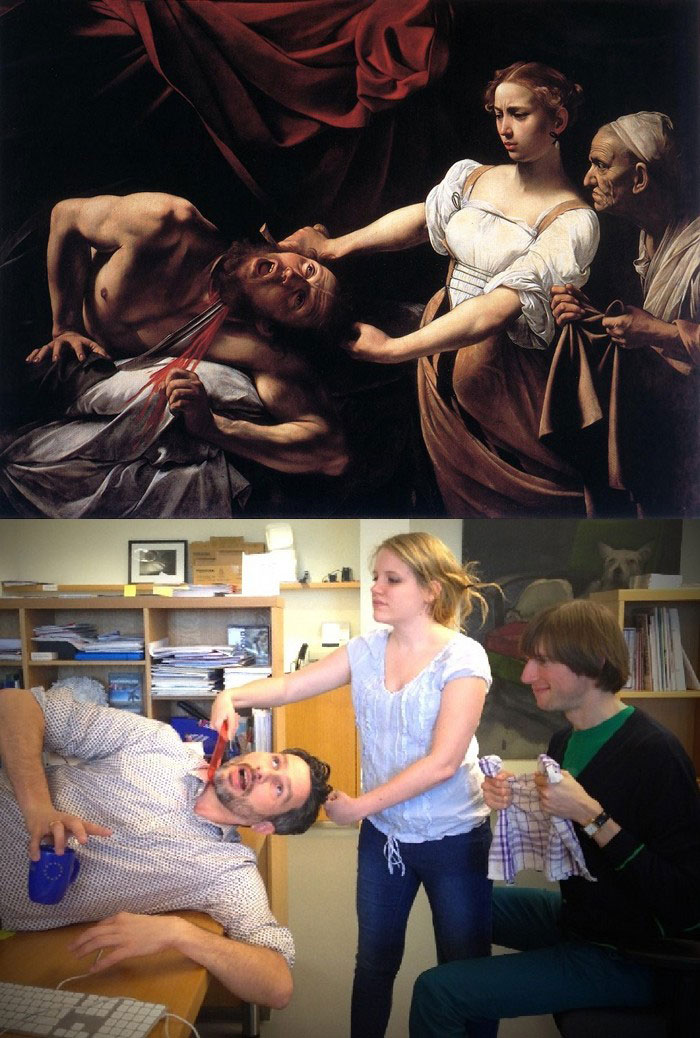
Frank: Being a big fan of strong women in art history, I used "Judith beheading Holofernes" to illustrate in a very subtle way how the crisis has finally reached Luxembourg... (License of this image: CC-BY-SA - License of original image: Galleria Nazionale d'Arte Antica at Palazzo Barberini - Playing Futures - Applied Nomadology on flickr, CC-BY-SA)

Jane: This is my own recreation, something about the paiting just reminded me of Princess Leia so the addition of a lightsaber seemed perfect. (License of this image: CC-BY-SA - License of original image: Stadtmuseum Simeonstift Trier - CC-BY)
Since we launched the first version, how has the project evolved? Which are the most successful paintings reenacted so far?
Jane: Initially, we received a flurry of 'selfie-style' pictures because of the media coverage by the BBC and The Telegraph which used the term 'cultural selfie'. As a result, users initially kept copying the selfie style images because these were what they saw shared in their own social media channels. This meant that for the first few weeks we had a lot of selfies twinned with the Van Gogh self portrait, as all the shared images linked back to the same painting and people just copied their friends and did their own version of the same image. We responded by re-ordering the paintings and after a while we broke the pattern and the quantity of the images started to go up.
Frank: We now receive mostly pictures where the users recreate artworks in more creative ways. We have a large number of recreations of the Last Supper, because it is clear that people naturally think of this painting whenever they have a dinner or gathering with a larger number of friends or family. This is especially true when it is a goodbye dinner or the last reunion of a circle of colleagues, for example the Last Supper recreation of a biology class before their final exams.
Portraits depicting only one or two people are also very popular, too because it is something that can be easily done between friends, like for example "The Woman with Smokey Eyes" from the Villa Vauban in Luxembourg, "Two Women from Naples" from the Simeonstift in Trier (Germany), "Madonna and Child" from the Rijksmuseum in Amsterdam or the very popular "Idyll" from the Royal Pavilions in Brighton which shows a kissing couple.
Which uses you’re seeing have more potential for the cultural tourism sector? How do you think the project can evolve? Is there new content already or to appear for re-use in the near future?
Jane: The project was a proof of concept to demonstrate how people can connect emotionally online with art. Looking at the submissions it is clear that we have successfully done this. The challenge now is to see if the project can also work on a local level, with a selection of only local images and be used as a local promotional engagement tool. This could be something like Mons, Belgium who are capital of culture in 2015, or maybe even a subset of images from a single collection, like The Van Gogh Museum. We are exploring this idea and are already talking to The Arts Council for Norway about how to create a specific version for Norwegian art.
Frank: We are adding more paintings from different venues each month, for example new images from the Byzantine Museum in Athens went live in June and were used in a live recreation at a Europeana event last month. We are continuously evolving our selection of art works, aiming for a bigger variety of artworks and for a better experience for the users. We are also working on partnerships with the collections in order to promote VanGoYourself via specific events, for example with the Van Gogh Museum or the Simeonstift in Trier. We are also working together with local tourist offices which support the promotion activities.
Which ones are your favourite “VanGo's”? Which ones have you find more interesting or shocking?
Frank: I really got blown away by the recreation of the Amsterdam Orphan girls by the user Martin Mohr: he recreated every single girl on its own and then put all the single images together. I also like the recreation of Mantegna's "Christ as The Suffering Redeemer" by three blokes having a beer after sunbathing. For some this might be shocking, because it is a rather funny recreation of a religious scene. For me, it is freedom of expression. I also like very much the recreation of a "Prison Scene" by the editorial team of a local newspaper, because the original painting shows one of my forefathers who fought for democracy. At first glance the recreation looks like a break in an ordinary meeting. But when you compare the recreation with the original you are surprised about the details of the recreation. The stove on the flipchart is just genius!
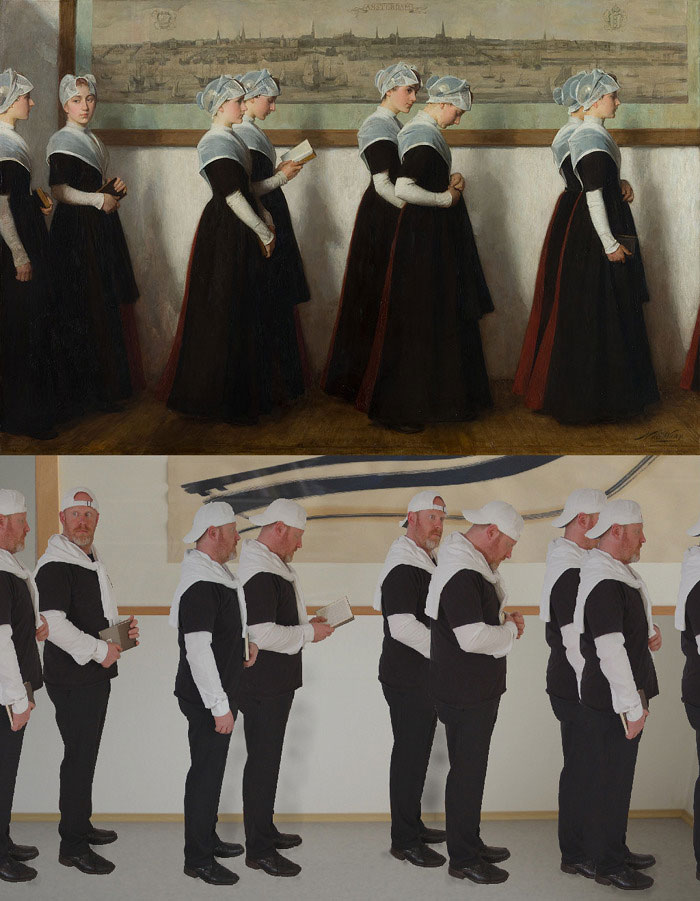
License of this image: CC-BY-SA - License of original image: Amsterdam Museum - Public Domain
Jane: I am very attached to the first recreation we ever did of the Last Supper with the Europeana Creative co-creation team. Plus the one I did with my son Jem blowing bubbles in his West Ham football kit!.
I also love the one from the Byzantine Museum because it was so fun to directing everybody and because people were at first a bit reluctant, but then became really enthusiast about it. Finally, I have to mention the VanGoYourself Tumblr which is a feed of ALL the images that are submitted, the good and the bad. There is something about this mix that makes the good ones stand out even more. It is also *very* funny.
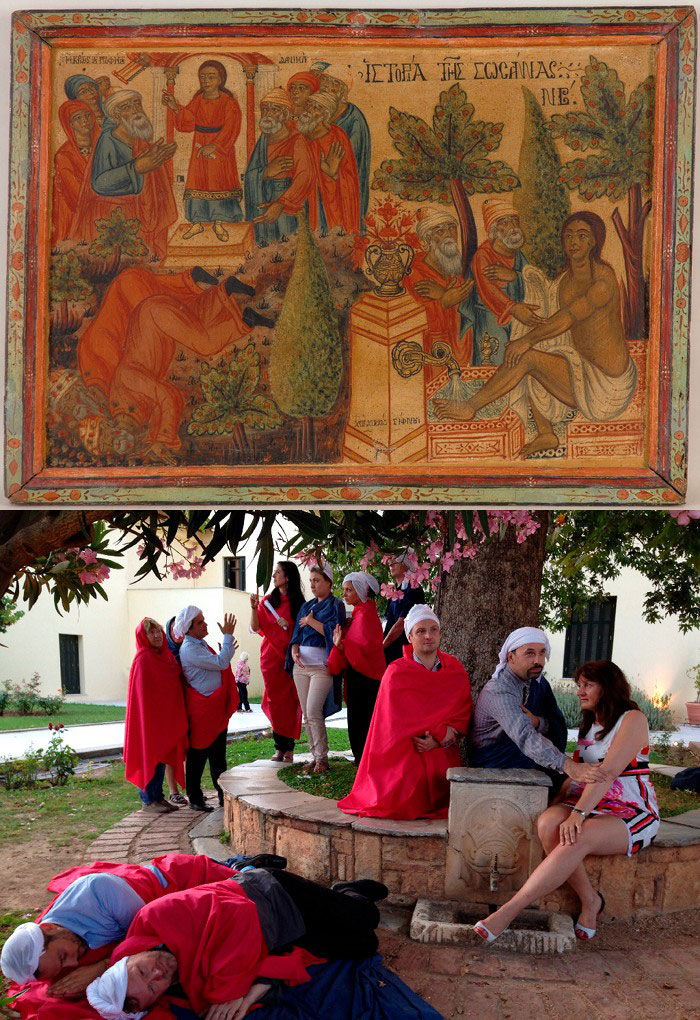
License of this image: CC-BY-SA - License of original image: Byzantine and Christian Museum - CC-BY
What do you expect to find in terms of other “cultural hacks” for the tourism sector with the forthcoming eCreative challenges? Since the event will take place in Barcelona in September, what content from cultural institutions in that region you think can be interesting for apps like this one?
Jane: What's most important to us about the tourism challenge is to see how other people take on the challenge to connect people emotionally with cultural heritage online. What else can they come up with that has space for the audience to connect and engage?
Frank: It would be great if local museums or collections would open up their digitized collections, in good quality, with a more open license for reuse. The best practice example of this is of course the Rijksmuseum who have put everything online in high resolution, under a public domain license, so that everyone can use it without restriction. The results are amazing - and we could have easily made an entire "RijksYourself" website with the material from that museum! We know that many content stakeholders are still afraid of opening up their collections in this way, but we hope that positive examples like VanGoYourself can demonstrate clearly the need for cultural collection holders to make their content earlier to reuse online - we call this making your content 'fit for purpose'.
